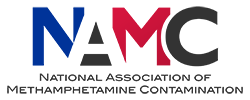Contamination of Homes with Methamphetamine: Is Wipe Sampling Adequate to Determine Risk?
Jackie Wright
ABSTRACT
Contamination of domestic dwellings from methamphetamine cooking or smoking is an increasing public health problem in many countries. To evaluate the extent of contamination, sampling generally focusses on the collection of surface wipe samples from walls and other surfaces of a potentially contaminated home. Here, we report the contamination levels of many household materials and items sampled from a home that was suspected to be the premises used to cook methamphetamine, it was then sold, lived in for several years by the new owners and then left unattended for several more years. Although the time since the cooking had taken place was significant (over five years), the levels of contamination were extremely high in both household items that were part of the house when cooking was taking place (blinds, carpets, walls, etc.) and also in articles brought to the house post-cooking (rugs, toys, beds, etc.). Both wipe sampling and analysis of bulk samples indicate that the methamphetamine is not breaking down or being removed and is transferred from contaminated to non-contaminated objects. These results raise questions about the adequacy of characterising contamination and of making decisions about the extent of remediation required based solely on surface wipe samples. Without fully understanding the extent of contamination that is present, not only on surfaces but within the building materials, it is difficult to ensure that the correct and most effect.
Full document here: http://namc.org.au/wp-content/uploads/2020/10/Wright-et-al-2019-IJERPH.pdf
